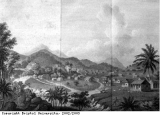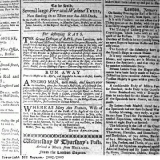Resistance to slavery
Slaves were not passive victims. Many resisted their enslavement in a variety of ways. A slave song about the Abolition movement to end slavery, ended with the words “… What Negro for to do? Take force by force! …”
Slave rebellions were frequent and were ferociously put down by planters. Slaves who were involved were often publicly killed ‘by progressive mutilation, slow burnings, breaking on the wheel,’ or by being ‘tortured or starved to death in cages.’ As late as 1832, the ‘Baptist War’ in Jamaica resulted in the killing of 200 slaves in battle and the execution of 344 more afterwards. The barbaric killings and ‘trials’ and executions of rebels were designed to discourage other slaves from rebelling.
Less obvious methods of resistance occurred on the plantations, such as theft, damaging of machinery and avoiding work. Individuals ran away, and although some were hunted down with dogs, and severely punished, others remained free. African women were knowledgeable about medicines. Plantation owners were anxious that the very slaves who prepared their food might poison them. Arson and murder were also ever-present threats in the owners’ minds. The slaves owned by the brutal plantation owner Edward Huggins, of Nevis, made five attempts on his life.
The Maroons of Jamaica were free. When the British took the island from Spain in 1655, many of the slaves ran away from their plantations, and became known as ‘maroons’. They made their homes in the mountains of Jamaica. The British fought against them for years, but the Maroons were always able to defeat them. Eventually, in 1739, the British made a peace treaty with the Maroons, accepting their freedom and giving them land. In return, the Maroons pledged to help capture runaway slaves.
Enslaved Africans also fought against slavery by keeping their African heritage alive in words, names, music and beliefs.
For more information on resistance to slavery and the Maroon conmmunity, see the section Black Resistance.




